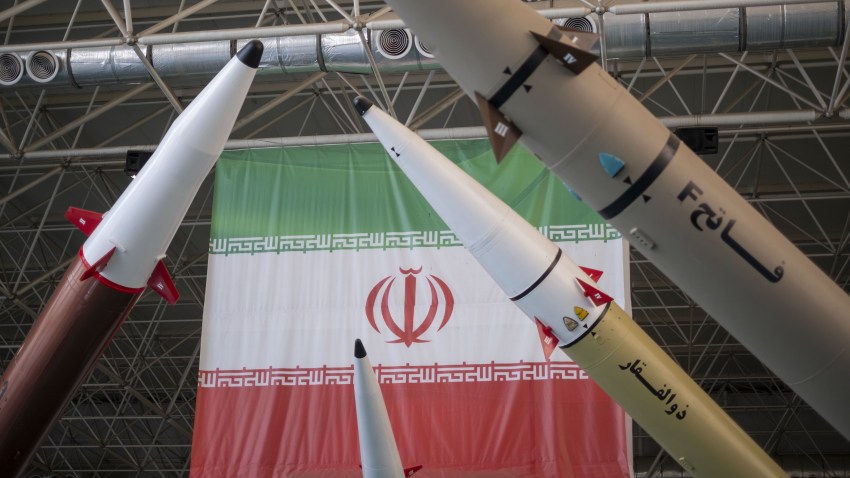President Joe Biden entered office promising to return the U.S. to the Iran nuclear deal, formally known as the Joint Comprehensive Plan of Action, or JCPOA. But doing so has proven tricky for Biden’s administration, in part because of the complex politics surrounding the deal in both Washington and Tehran, but also because of the tense relations between the two countries, which soured significantly under Biden’s predecessor, Donald Trump.
In May 2018, when Trump followed through on a campaign promise to withdraw the U.S. from the 2015 multilateral deal limiting Iran’s uranium enrichment program, Tehran initially reacted by adopting a posture of strategic patience. But beginning in early 2019, Iran gradually began to breach its obligations under the nuclear deal, exceeding limits on its stockpile of enriched uranium and the level to which it is enriched. Iran subsequently limited the International Atomic Energy Agency’s ability to monitor its nuclear program.
Supporters of the Iran nuclear deal in Washington and Europe hoped that the Biden administration would quickly return the U.S. to compliance with the agreement by removing unilateral sanctions, while also pursuing follow-on talks to address Iran’s missile program and regional behavior. But negotiations in Vienna to resuscitate the JCPOA proved to be more difficult than anticipated, even as opponents of the deal in the U.S. and Iran consider their options.
More recently, ongoing popular protests in Iran over the law requiring women to wear a head-covering—sparked by the death of a young woman while in the custody of the morality police—as well as Tehran’s willingness to supply Russia with drones and missiles for the war in Ukraine have made the political optics of renewing the deal more costly for Washington. And Israel’s war with Hamas, which Tehran has long provided with military support, as well as the two countries’ recent exchange of missile and drone strikes has only exacerbated that dynamic. The nuclear talks have not yet been abandoned. But the mounting political obstacles—combined with the declining utility of the deal, due to Iran’s advances in uranium enrichment and the shortened timeline for the JCPOA’s sunset clauses—now make it almost certainly a dead letter.
The U.S. sanctions that Trump reimposed on trade with Iran forced governments and companies from Europe to Asia to end their economic engagement with Tehran, with a particularly severe impact on Iran’s oil exports. The resulting domestic economic tailspin has heightened social and political tensions within Iran. But rather than moderating the regime’s behavior, the heightened pressure from Washington seems to have strengthened the hand of hardliners in Tehran, who since 2020 emerged as the big winners in every parliamentary and presidential election held—until last week.
In a snap presidential election triggered by the death of former President Ebrahim Raisi in May, Masoud Pezeshkian—a reformist candidate who advocated for reopening nuclear talks with the U.S.—won a surprise victory over a hard-line conservative candidate. The outcome serves as a reminder that Iranians’ desire for moderation and change has not been extinguished. But Pezeshkian will have to skillfully navigate the constraints of Iran’s political landscape if he is to follow through on his campaign agenda of reform and dialogue, both at home and abroad. In the meantime, the Iranian population is increasingly caught between the pressure of U.S. sanctions and the repression of an authoritarian regime in Tehran that remains intent on projecting its power and influence across the region, no matter the cost.
WPR has covered Iran in detail and continues to examine key questions about what will happen next. Will Pezeshkian’s election lead to a thaw in relations with the U.S. and a breakthrough in efforts to resuscitate the nuclear deal? Will Iran strengthen its ties with Russia and China to counter the U.S. and Israel? Will outside pressure, combined with long-simmering popular grievances at home, undermine the regime’s domestic control? Below are some of the highlights of WPR’s coverage.
Editor’s note: This article was originally published in July 2019 and is regularly updated.

